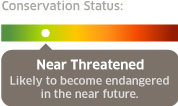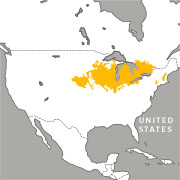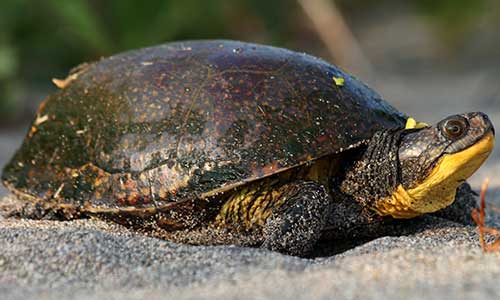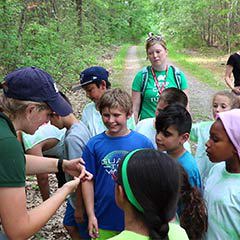Appearance:
Blanding's turtles are medium-sized turtles that are mostly dark, with spotted shells. Their carapace (upper shell) is smooth and black with speckles of yellow spots and streaks. Their plastron (bottom shell) is yellow with large patches of brown or black. The plastron is hinged across the middle, allowing the turtle to pull its shell up to protect its head, neck and legs from predators. Because of this unique adaptation, Blanding's turtles are often called "semi-box turtles." They have a unique bright yellow neck and chin, and they appear to have a black moustache and lips. They have webbed feet for swimming and sharp claws for digging.
Size:
- Length: Shell is 8 - 10 inches in diameter; males are typically larger
- Weight: 1 - 3 pounds
Diet:
Crayfish, snails, insects, frogs, and fish, as well as vegetation and berries
Reproduction:
Their breeding season is in early spring. Females lay their eggs in sandy soil, and incubation lasts from 65 to 90 days. They typically have three to 17 hatchlings, which reach sexual maturity between 14 and 20 years of age.
Behavior:
During the winter turtles hibernate by burrowing in silt on the bottom of a pond, bay, river, or other body of water to stay warm. This allows these cold-blooded reptiles to retain their body heat, and they don't have to remain awake all winter searching for food. Blanding’s turtles are gentle and timid. When alarmed or threatened, they'll retreat into their shell or remain submerged under water rather than attempt to bite.
Habitat/range:
Blanding's turtles are found throughout much of the northeastern United States and southern Canada, west to the Great Lakes region. These turtles are semi-aquatic; they like water, but they will also go on land. They prefer to live in grassy marshes with shallow water. Occasionally, Blanding’s turtles leave the water and travel on land to search for food or bask in the sun.
Conservation:
Blanding's turtles are often prey to predators when they are hatchlings. Loss of habitat is a major concern in many areas where Blanding’s turtles live. Their conservation status is considered threatened in the Commonwealth of Massachusetts, and Blanding's turtles are endangered in New Hampshire.
Median Life Expectancy:
70 years






